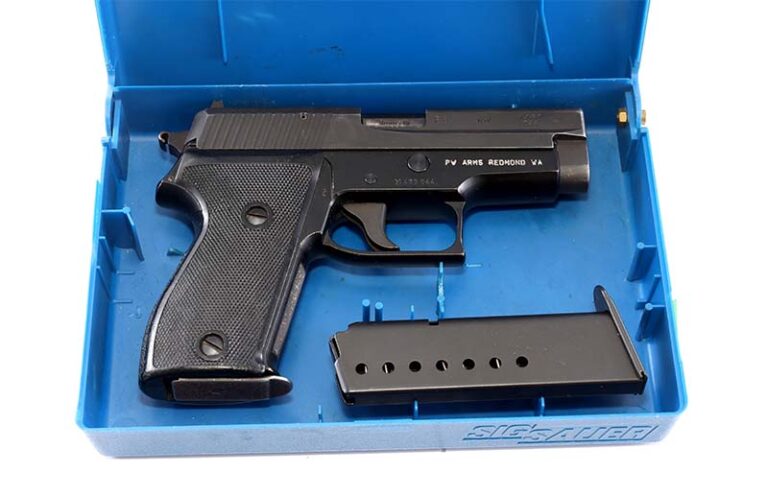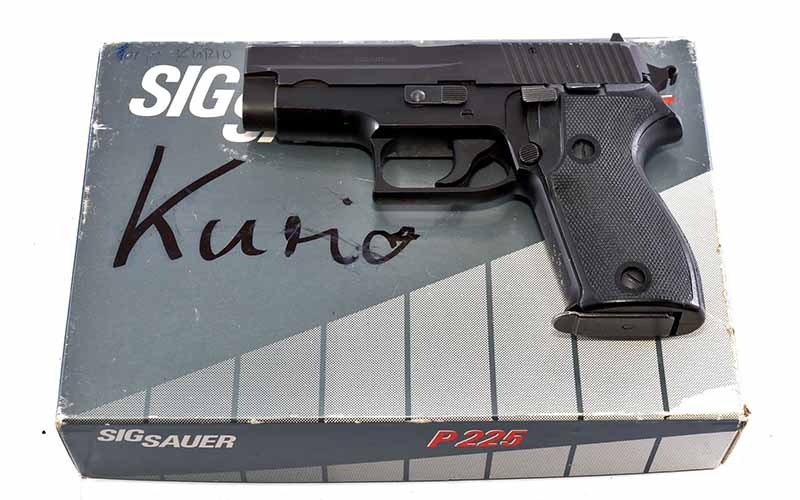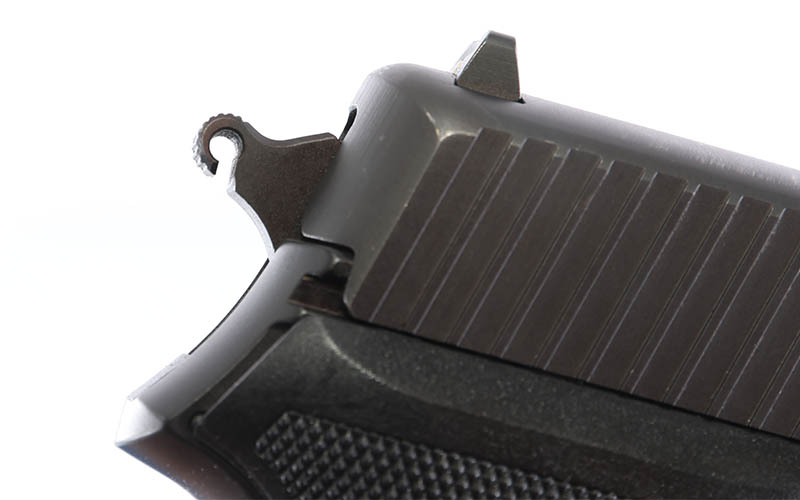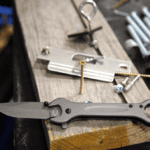
The author reviews a West German LE surplus Sig P6, a handgun that’s remained practical while becoming collectible.
It was the early 1970s, and European police forces had a new problem: terrorists. Those LE officers had a miscellaneous assemblage of .32s and .380s in their armories … while the bad guys were starting to use 9mm SMGs. Not good. So, the West German Federal police issued a request for a new sidearm, and it was to be in 9mm Parabellum. HK offered up the PSP (which we know as the P7), and Walther offered up a newly built P38 with a shorter barrel, dubbed the “P5.” In-between, the tasking authority dubbed the Sig entry as the P6, the model we know as the P225.
All of the new pistols accepted for use were single-stack 9mm pistols, and that was considered a big step up by the police forces (compared to packing a .32 Auto, any of them would be). All three were approved, and each law enforcement agency or administrative state was free to purchase and issue any of them. The P5 (P38) wasn’t popular, and the P7 (HK) was the more expensive one, so most states bought P6s.

Rising To The Top
The P6 is basically a pared-down single-stack P226, or a compact P220. It’s smaller and lighter than either, and since it has a single-stack magazine, it’s easier to grasp for those with smaller hands. It’s a traditional double-action system, trigger-cocking on the first shot and with the hammer cocked by the slide on subsequent shots. There’s a hammer-dropping safety lever on the left side, and this safely lowers the hammer after it has been cocked. Manufactured in Eckernförde, Germany, at the J.P. Sauer plant (which Sig bought a controlling interest in so they’d qualify for contracts), most German states purchased the P6 due to it costing less than the other two pistols.










